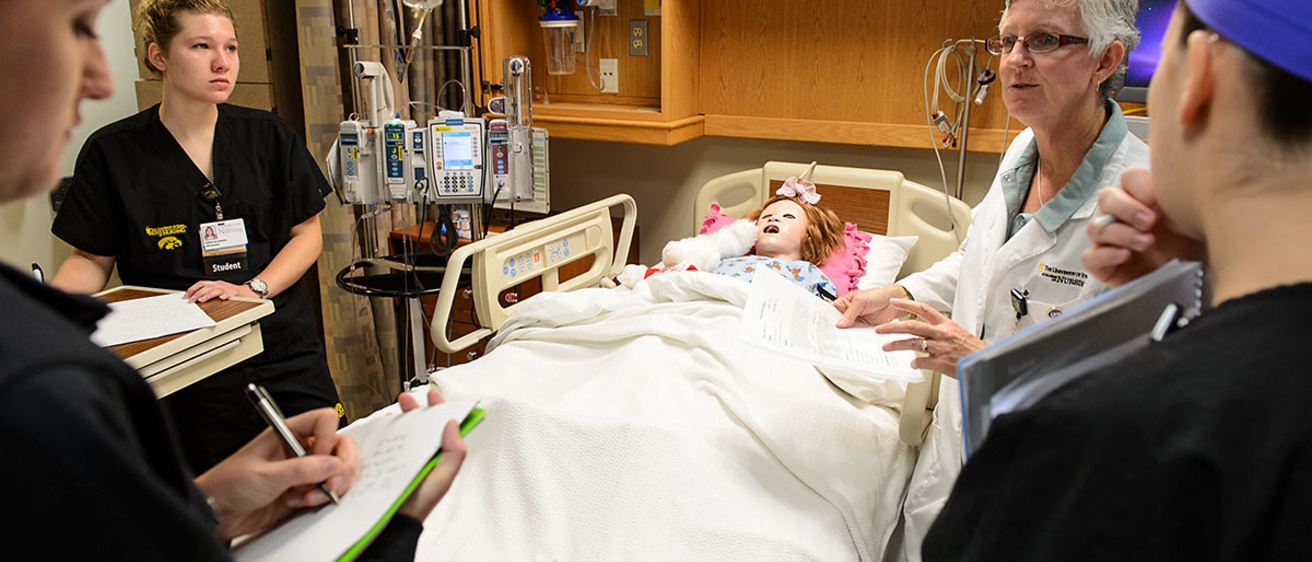Classroom Pass is an Iowa Now project that sent teams of writers, photographers, and videographers to 15 classes on Wednesday, Oct. 22, to showcase the breadth and strength of the University of Iowa's academic offerings for undergraduates as well as its dynamic faculty and state-of-the-art facilities. See what other classes they visited.
Class: Parent Child Nursing Practicum
Instructor: Kelly Smith, clinical instructor in the College of Nursing
Five-year-old Josie, recovering from surgery, lies on her hospital bed, a stuffed rabbit clutched in her arms, with her mother on her left and an IV pole on her right.
Four nurses enter the room, each taking their turn introducing themselves, checking Josie’s vitals, and helping her as she struggles with pain and nausea. They administer a medication to calm her stomach.
Suddenly, one of the nurses notices Josie has gone to sleep, and neither her mother nor any of the nurses can rouse her. The anti-nausea medication has had a negative interaction with the girl’s pain medicine.
With the proximity of UI Hospitals and Clinics, the College of Nursing is able to combine in-depth learning with extensive patient contact. The two entities partner to operate the Nursing Clinical Education Center.
The nurses leap into action and work to determine how best to address the interaction and get Josie stabilized. They continue working until Kelly Smith, a nurse and clinical instructor in the UI College of Nursing, tells them to stop and to return to the classroom.
The scene was part of a patient simulation class, and the four nurses were actually nursing students. Josie is a life-like simulated pediatric patient, one of several in the college ranging from infants to adults. Her chest rises and falls as though she’s breathing, her eyes blink, and her voice can be controlled by someone sitting behind a screen and speaking into a microphone.
Smith and the students start to debrief, pointing out what went right and what went wrong. For these students—all seniors—it was the first time working with a pediatric simulation.
“I felt really confused because there were so many things going on at once,” one student says during debriefing.
That, Smith says, is the true benefit of patient simulation.
“This is how we learn,” she says.
